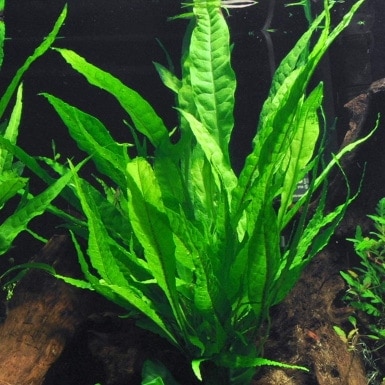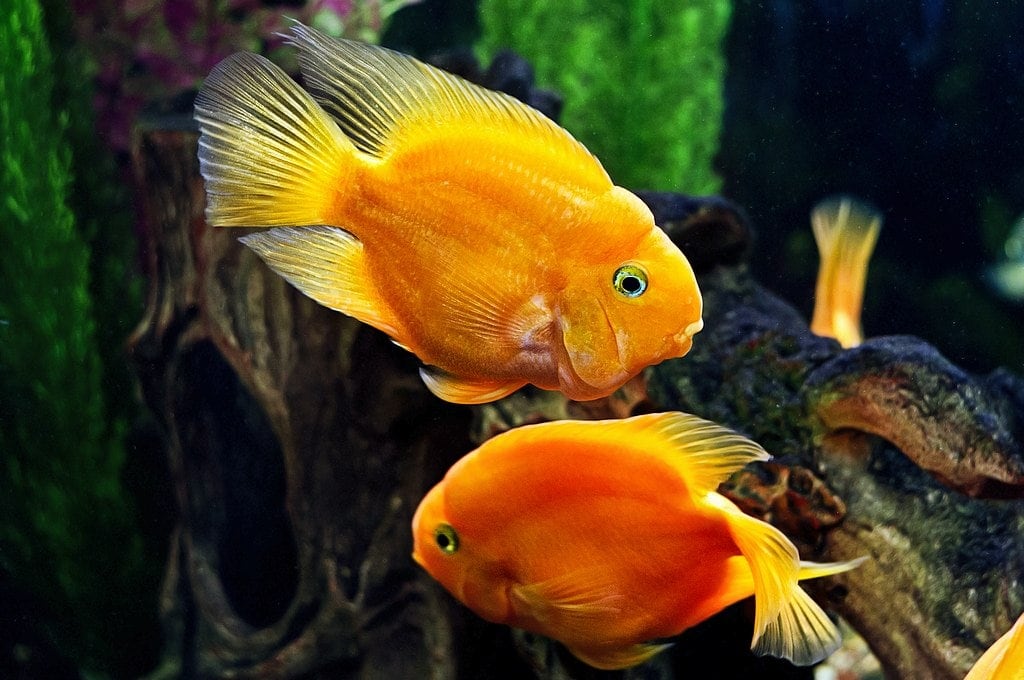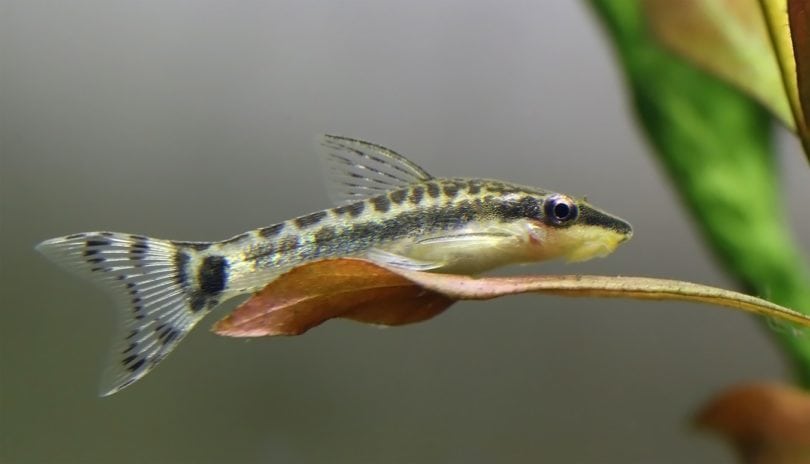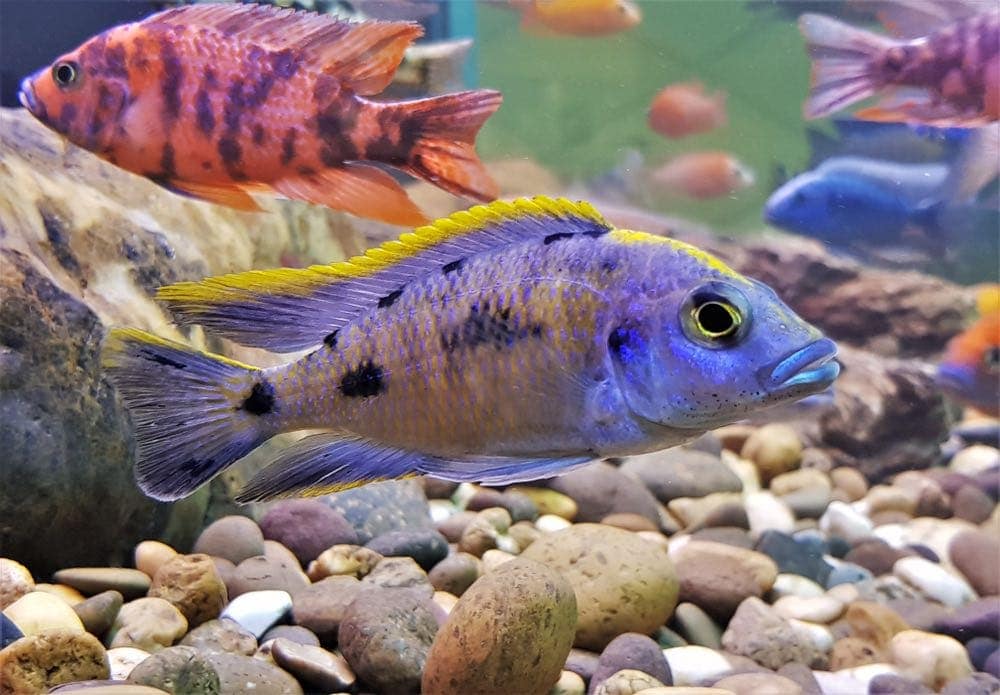3 Best Aquarium Plants For Driftwood in 2024: Reviews & Top Picks

Updated on
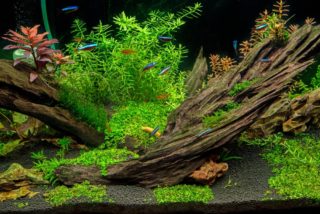
If you are looking for some aquarium plants that look nice, don’t grow too large, and are simple to care for, you might want to look into some aquarium plants that can be attached to driftwood.
Not all aquarium plants are ideal for attaching to driftwood, so we are here today to help you
A Quick Comparison of our Favorites in 2024
| Rating | Image | Product | Details | |
|---|---|---|---|---|
| Best Overall |

|
Java Fern |
|
Check Price |

|
Anubias |
|
Check Price | |

|
Java Moss |
|
Check Price |
The 3 Great Aquarium Plants For Driftwood
There are quite a few good options out there, but in our opinion, these are the three best options for driftwood or attaching to other rough surfaces such as rocks.
1. Java Fern
| Care Level: | Easy |
| Light: | Low |
| Substrate: | None (Rhizome) |
| Goldfish Proof Score: | 90% |
| Water Purifying Score: | 60% |
This plant consists of two main parts, which are the leaves and the rhizomes. The rhizomes are these thin and long strings that hang from the bottom, which act like the roots of the plant.
Keep in mind that java fern does not like to be buried in substrate, and probably will not grow at all. It is best attached to a rough piece of driftwood, lava rock, or any other such rough surface that the rhizomes can cling to.
Appearance
The java fern has fairly long, thin, and pointed green leaves which can grow up to 14 inches in length, but can be kept shorter by trimming.
The plant itself will grow to a maximum of 7 inches in width. If you have a large aquarium, it makes for a good center plant, and if you have a smaller tank, it makes for a good rear corner plant, as it will grow fairly large without proper trimming.
Care
The good part about the java fern is that it is relatively easy to care for and does not need much special treatment. It does not require the addition of extra CO2 into the tank, which is a big bonus.
This plant likes fairly soft and acidic water, with a pH level between 6.0 and 7.0 and a water hardness level between 3 and 8 dGH. In terms of temperature, anywhere between 68 and 82 degrees Fahrenheit will do just fine.
It’s also a good option because in the wild, the java fern grows fine in the shade and it does not require much light. A simple aquarium light will do just fine.
- Great for beginners, hard to kill
- Inexpensive
- Does not need a substrate
- Hardy and tolerant
- Medium Java Fern (4-6” Tall)
- Jumbo Java Fern (7” Tall)
2. Anubias
| Care Level: | Easy |
| Light: | Low to medium |
| Substrate: | Any or none |
| Goldfish Proof Score: | 90% |
| Water Purifying Score: | 60% |
Anubias are another great type of plant to attach to driftwood, and they are very hardy too. This is another one of those aquatic plants that feature rhizomes and leaves, with the rhizomes needing to be attached to something like rock or driftwood, a rough surface it can cling to.
It also does not like to be buried under substrate. With that being said, Anubias are extremely easy to attach to rock or driftwood. Simply tie them on and the rhizomes will attach themselves very quickly.
Appearance
In terms of appearance, Anubias are one of the shorter, if not the shortest aquarium plant of its kind out there. For this reason, it is an ideal plant for smaller aquariums which do not have a whole lot of room to spare.
They do not grow very wide, and when it comes to height, they usually top out at around 7 inches and can be kept even shorter with proper trimming. This makes Anubias perfect foreground and midground plants, especially if you want to cover some substrate.
They make for good bottom plants, especially for fish that like to hang out in the bottom part of the tank. The leaves of Anubias are fairly round and they come to a point at the front, with a green color.
Care
Anubias are also quite easy to care for. Now, they do need a fair amount of light, so you will need to get a decent aquarium light so this plant can perform photosynthesis. This plant should not be in the shade too much.
Moreover, you might also need an aquarium heater, as this plant requires the water temperature to be between 72 and 82 degrees Fahrenheit. In terms of the pH, anywhere between 6.0 and 7.5 will do just fine, with a water hardness level between 3 and 8 dGH. Keep in mind that Anubias grow quite slowly too, which also adds to ease of maintenance.
- Tolerant and hard to kill
- Good for water purification
- Slow and steady growing
- Great for beginners
- Dwarf Anubias (1” tall)
- Anubias Gigantea (5–8” tall)
3. Java Moss
| Care Level: | Easy |
| Light: | Medium |
| Substrate: | None (floating) |
| Goldfish Proof Score: | 90% |
| Water Purifying Score: | 50% |
This plant also has those rhizomes which we have mentioned several times now, those long and stringy hair-like appendages that act as its anchors.
No, this plant does not like being buried in substrate. It needs to be attached to rocks or driftwood so the rhizomes can grow onto the surface and anchor the rest of the plant down. Although, this is easily done using some fishing line, or something similar.
Appearance
What is cool about java moss is that it makes for a great carpeting plant (if you need some tips on making a good carpet, then have a look at this article), although it does need to be on driftwood, so it more or less ends up creating a carpet of moss on the wood or on the rock it is attached to.
It features lots of little, green pointy leaves, and yes, it looks much like other kinds of moss which you might find above the surface of the water. It kind of looks like a mix between ferns and moss, with the small size of moss, and with the leaves looking like miniature ferns. It does not grow very tall, just a few inches, so it’s another one of those aquarium plants that works well for small spaces and fairly shallow aquariums.
Care
Java moss is very easy to care for, which is another attractive feature of it. This stuff grows quite well in both high and low light conditions, although it does do better with ample light.
Moreover, it can also handle both fairly warm and cool water, really anywhere from 20 to 30 degrees Celsius, and it does grow a bit faster in cooler waters. It does not require extra CO2 in the water. It likes soft and slightly acidic water, with a pH level between 6 and 7 being ideal. It does like a bit of a water current as well, just to keep that in mind.
- Minimal care requirements
- Slow and steady growing
- Hardy and tolerant
- Can be tied or glued to driftwood
Tips On How To Attach Plants To Driftwood
Attaching aquarium plants to driftwood is not very hard at all, but there are a few tips that you want to follow in order to get the job done properly.
- All you need to do is get some fishing line, some thin and see-through fishing, wrap it around the part of the plant with the rhizomes, so up and over the rhizomes, between the leaves, and then back down the other side. Tie the fishing line to the driftwood or to a rock using a simple knot.
- Make sure to tie the fishing line tight enough so that it does not move around and so that the plant is not floating above the driftwood. However, at the same time, do not tie it so tight that you end up damaging leaves or rhizomes.
- After a few days, or maybe a few weeks, depending on the growth rate of the plant in question, the fishing line will no longer be necessary. Once the rhizomes have firmly anchored themselves to the driftwood, the fishing line can be cut off.
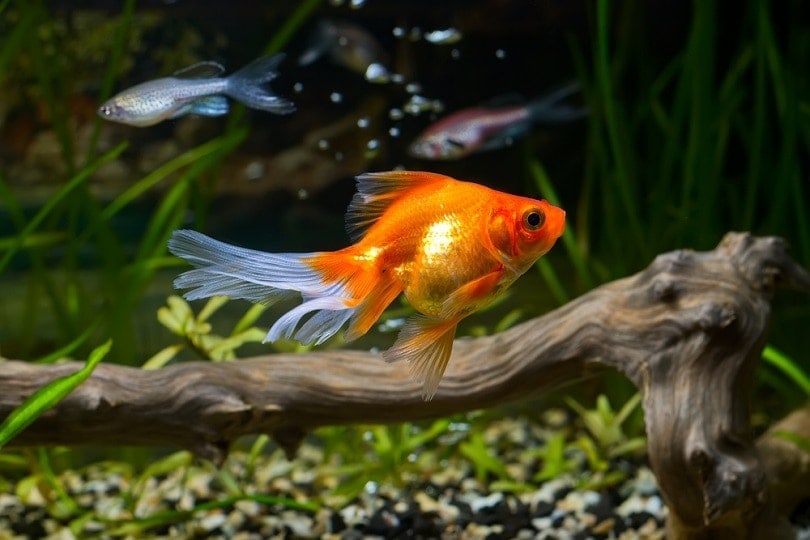
Important: Make Sure You Use The Right Driftwood
On a small side note, you do want to ensure that you use the right kind of driftwood. This has more to do with its texture than anything else.
You don’t want to get driftwood that is smooth, because the rhizomes will have a difficult time anchoring to anything smooth. The driftwood should be rough and have a lot of texture, as this will make it much easier for the rhizomes to anchor themselves down.
Also, keep in mind that you do want to look for driftwood that has been treated so that it does not release tannins into the water, as this may negatively impact your aquarium plant.
Conclusion
At the end of the day, the Anubias, java fern, and java moss are three of the best options in our opinion. None of them grow very large, they all look fairly nice, and they are super simple to care for. Who knows, you might even choose to go for more than one of them!
Featured Image Credit: you sheng, Shutterstock




